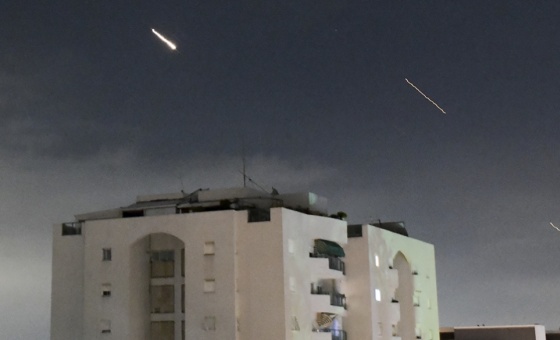This is the last article you can read this month
You can read more article this month
You can read more articles this month
Sorry your limit is up for this month
Reset on:
Please help support the Morning Star by subscribing here
LATE February or early March is the time to see one of the wonders of our waterside wildlife, and without any doubt the star of the feathered flotilla is the great crested grebe (Podiceps cristatus).
Victorian milliners — hat-makers to you and me — and taxidermists slaughtered thousands of grebes, along with other birds, to harvest their beautiful feathers.
They were used in women’s hats of course but just as many were used in military uniforms, hat badges and adornments.
What would become the Royal Society for the Protection of Birds (RSPB) was formed to counter this barbarous trade in feathers. Not just grebes but also egrets, birds of paradise and many other species.
Emily Williamson started the Society for the Protection of Birds (SPB), at her home in Manchester in 1889.
The group quickly gained popularity and in 1891 it merged with the London-based Fur, Fin and Feather Folk, to form a larger and stronger SPB, based in the capital.
In its earliest days, the society consisted entirely of women and membership cost two pence.
Rules were simple: members shall discourage the wanton destruction of birds and interest themselves generally in their protection.
Lady members shall refrain from wearing the feathers of any bird not killed for purposes of food. The wearing of ostrich plumes is permitted.
Today the RSPB has more than a million members, making it the largest wildlife conservation charity in Europe. It has 200 of its own nature reserves.
In 1903 many of that same group of women activists joined in the battle to get votes for women.
They would help to found the Women’s Social and Political Union (WSPU) with the motto “Deeds not words.” Many of the bird-watchers became suffragettes.
Harrow public school, north of London, is not so well-known as Eton but at least one prime minister, Winston Churchill, got his education there.
Tom Harrisson was a student at Harrow in the 1920s. He was born in Argentina, son of a railway engineer and manager who moved his family all over the globe.
When the first world war started, Harrisson senior took his family back to England where he became a highly decorated brigadier.
Young Tom had no friends apart from his brother. Their nanny, Kitty Asbury, took them on long country walks.
Tom had taught himself to read by the age of five from Nanny Kitty’s many bird and natural history books.
In 1919, Tom’s parents moved back to Argentina, leaving their sons at boarding school in England.
Then during 1922 and 1923, Tom and his brother were taken back to Argentina. Tom’s father taught him to hunt, fish and climb.
Tom built an aviary to study the exotic South American birds and their behaviour.
He attended Harrow public school from 1925 to 1930. He had little interest in making friends with his fellow schoolboys, but most peculiarly he kept a card index with details of every pupil at the school.
At just 17 he wrote a book on the birds of the Harrow district. It was published by a local bookshop.
At the age of 19 he organised 1,300 other birdwatchers in a pioneering census of the great crested grebe. These groundbreaking grebe censuses are still held regularly.
He started his university education at Cambridge but soon the Oxford University Exploration Club lured him away. He joined a six-month expedition to discover the birds of Sarawak.
As war clouds gathered, Tom with two friends, Humphrey Jennings, who would become a legendary film-maker, and Charles Madge, decided to use Tom’s bird-counting skills and census experience to look at people and their behaviour.
They formed an organisation called Mass Observation (MO). It would run from 1937 to the mid-1960s. It aimed to record everyday life in Britain using around 500 volunteer observers.
In August 1939 MO invited members of the public to record and send them a day-to-day account of their lives in the form of a diary.
One such was a 16-year-old Jewish girl from Romford, east London, called Nina Masel. Within a year Nina was writing and reporting full time for MO.
As Nina Hibbin she would go on to become film critic for the Daily Worker (now the Morning Star) from 1960 to 1971.
Working for MO, Hibbin first reported on the British public’s reaction to propaganda war posters.
She went on to write studies on anti-semitism in London’s East End and she looked at conditions in the city’s air-raid shelters.
She worked as an observer in the East End throughout the early part of the war, engaging citizens in casual conversation to establish morale and the effectiveness of the government’s security measures.
By 1941 MO was working more and more closely with the Churchill’s Ministry of Information and Hibbin saw that as an act of betrayal.
She resigned from MO in 1941, as a protest against what the ministry was doing with her reports.
By now women could enlist in military units on the home front. Hibbin signed up for the Women’s Auxiliary Air Force (WAAF). At first she worked as a mechanic servicing the famous Spitfires.
She also carried on her journalism as a contributor on working-class life in London for Picture Post magazine. She also wrote film reviews for The Lady and later books on aspects of cinema.
Working for The Lady — that most posh of women’s magazines — might seem odd but at the time, True Lady this, or some Dowager, claimed most of the bylines, but the real editing and writing seemed to be done by freelance communist women journos keen on a practical redistribution of wealth.
Now let us get back to the towpath and take a closer look at Podiceps cristatus — the great crested grebe. It really is such an elegant waterbird.
Its ornate head plumes which led to its being hunted for its feathers by late Victorian and Edwardian milliners look just like fashionable hats on the live grebe.
Watch for a minute or two and the grebe will disappear, diving to catch a fish — their main diet.
They also to escape underwater if threatened, preferring this to flying.
Try holding your breath when they dive. You will certainly have to take a breath before the grebe pops up again.
On land grebes are really clumsy. Their feet are placed at the back of their bodies, making walking much more difficult than swimming.
Another endearing feature is that adult grebes sometimes give their youngsters a ride on their backs.
Grebes have an elaborate courtship display in which they rise out of the water and shake their heads.
These mating displays usually begin with one bird sending out its loud grating advertising call.
Another grebe starts floating up, giving the impression of doing nothing special at all.
This new bird dives, not a deep dive, but a way of sneaking up almost unseen.
This new bird rears up out of the water almost to its belly, yet with its neck arched down. The original bird half opens its wings and ruffles its cheek frills.
Male and female are ready to dance. First, they face each other, shaking their heads from side to side.
Occasionally they turn around to flick their back feathers with their bills.
The pair dive deep, resurfacing with greenery in their bills. They rush towards each other and meet breast-to-breast high up out of the water.
They paddle wildly to keep their balance. They cuddle for some time displaying their waterweed. Suddenly it is all over.
I’ll finish on an amazing recent discovery about our own native grebes.
The latest science, both in fossil studies and DNA testing has suggested that our grebes are closely related to another well recognised bird.
Evidence strongly supports a close relationship between flamingos and grebes.
A year or so ago walking along the Grand Union Canal in Northamptonshire, my wife Ann and I were astounded to see a pair of flamingos dabbling in the water.
The local paper confirmed our sighting and revealed they were escaped exotic garden pets.
Perhaps it was really just they had been visiting their grebe relatives.








